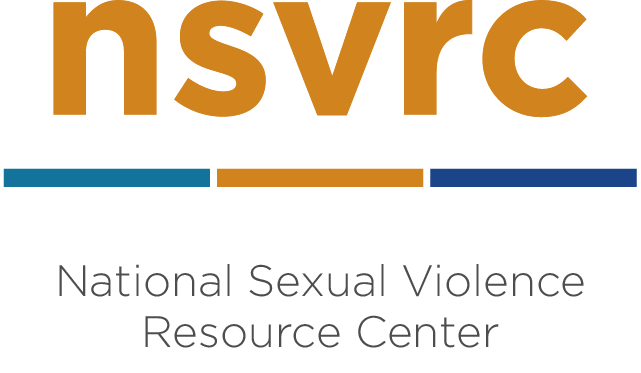Sexual violence happens when a person uses control, force, or pressure to make someone participate in unwanted sexual activity. In this discussion, youth and young people are defined as age 12-18. Rates of sexual violence in this age group are very high. It is usually a friend, peer, or acquaintance who commits sexual violence against this age group.
Sexual violence is a crime
Many people use terms like “date rape” or “acquaintance rape” to describe rapes that occur between people who see each other socially. Because people do not understand how a dating experience could become violent, sometimes these crimes are not taken seriously. Miscommunication or sexual experimentation do not cause sexual violence. It is an abuse of power. A person may use dating to gain trust and access to a potential victim. They may also use alcohol and drugs to gain control over the other person.
Common factors in youth sexual violence
• Many young people do not seek help.
• Friends and family may blame the victim for the attack (“but why were you drinking?”).
• Young adults and youth who are victimized may be more likely to be sexually assaulted again in the future.
• Most assaults occur in the victim’s home, neighborhood, or school.
• Adults, young adults, and youth can commit sexual violence.
Prevalence Statistics for youth and young adults
Who experiences youth sexual violence?
One in four girls (24.7%) is sexually abused before the age of 18 (CDC, 2005)
One in six boys (16%) is sexually abused before the age of 18 (CDC, 2005).
Rape is more likely to happen to younger women than older women. When discussing their first experience of rape, women surveyed reported that (Tjaden, 1998) :
- 22% were under 12 years old
- 32% were 12-17 years old
- 29% were 18-24 years old
- 17% were over 25 years old
74% of teen (ages 13-17) sexual assault victims said that someone they knew well had assaulted them (Kilpatrick, 2003).
Sexual assaults against youth happen in familiar places (Kilpatrick 2003)
31% happened in the person’s home
24 % happened in the person’s neighborhood
15% happened in the person’s school
13.3% of college women shared that they had been forced to have sex in a dating situation (Sigler & Johnson, 2000)
Who commits youth sexual violence?
17% of all the people arrested for sex crimes are teens (Bonner, Chaffin, & Pierce, 2003).
Researchers estimate that teens commit up to 20% of all rapes and 50% of all cases of child molestation committed each year (Barbara, Hudson, & Seto, 1993)
Tools and resources
Look Past Labels: Lessons from Working with Youth Who Experience Homelessness and Sexual Violence by the NSVRC (2014)
This recorded webinar introduces the Linking the Roads guide and infographic for a discussion around trauma-informed practices and community partnerships for serving youth who experience homelessness and sexual violence. Download transcript.
Law Enforcement as Community Mentors to Youth by the NSVRC (2012).
John Haynes is Chief Investigator of the City of Durant Police Department in Durant, Mississippi. This video podcast highlights Investigator Haynes as a community partner of the Community Student Learning Center in Lexington, Mississippi and discusses his experiences as a community mentor and how it has informed his work as a police officer.
Teen Mentoring and Peer Support Program by the NSVRC (2012).
In this video podcast, Ms. Barbara Booth, a staff member of the Community Student Learning Center in Lexington, Mississippi discusses some key aspects of the student peer support project that The Community Student Learning Center is implementing to end intimate partner sexual violence among teens.
Linking the Roads by the NSVRC (2014)
With a two-part video podcast, Michelle Hall, Director of Transitional Living at the Oasis Center in Nashville, Tennessee discusses trauma-informed approaches to working with and building relationships with homeless youth.
The two podcasts in the series include:
- Linking the Roads, Working with Youth Who Experience Homelessness and Sexual Violence
- Linking the Roads, Building Relationships with Youth Who Experience Homelessness and Sexual Violence
Linking the Roads: Working with Youth Who Experience Homelessness & Sexual Violence by the NSVRC (2014)
This guide focuses on adapting advocacy skills to help young people who experience homelessness and sexual violence build resiliency and lessen their traumas. It has three aims: (a) to provide an overview for the intersections between identity, trauma experiences, and resiliency among youth who are homeless; (b) to highlight core skills and techniques for advocates; and (c) to discuss how to tailor these skills in order to improve services for youth who identify as LGBTQ.
Also available is an infographic, Homeless Youth & Sexual Violence, which illustrates statistics that show the link between youth homelessness and sexual violence.
2014 Sexual Assault Awareness Month Campaign by the NSVRC (2014)
The 2014 SAAM campaign focuses on healthy sexuality and young people. This campaign provides tools on healthy adolescent sexuality and engaging youth. Learn how you can play a role in promoting a healthy foundation for relationships, development, and sexual violence prevention. SAAM 2014 engages adults in supporting positive youth development, and encourages young people to be activists for change. Many resources also are available in Spanish.
